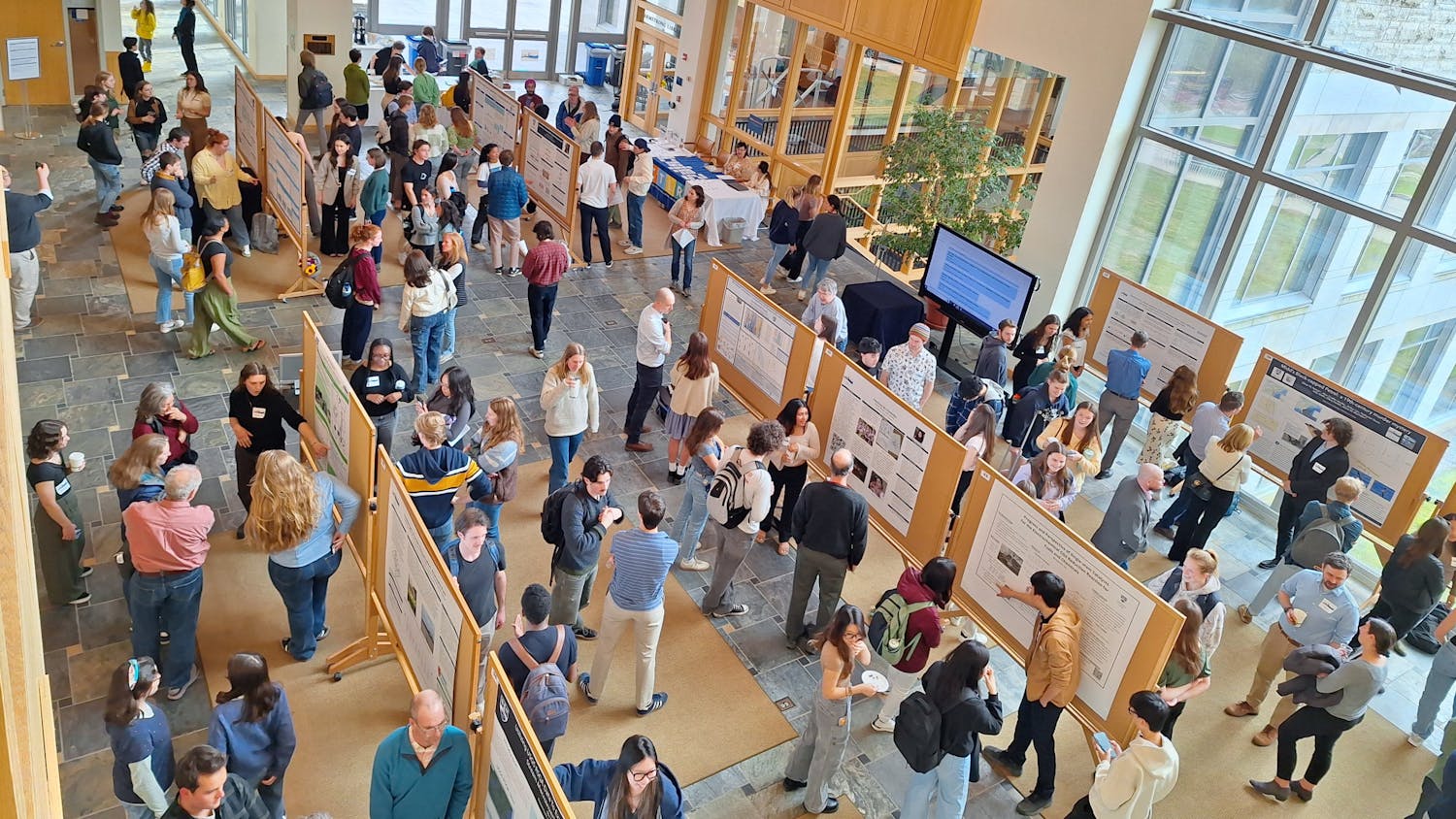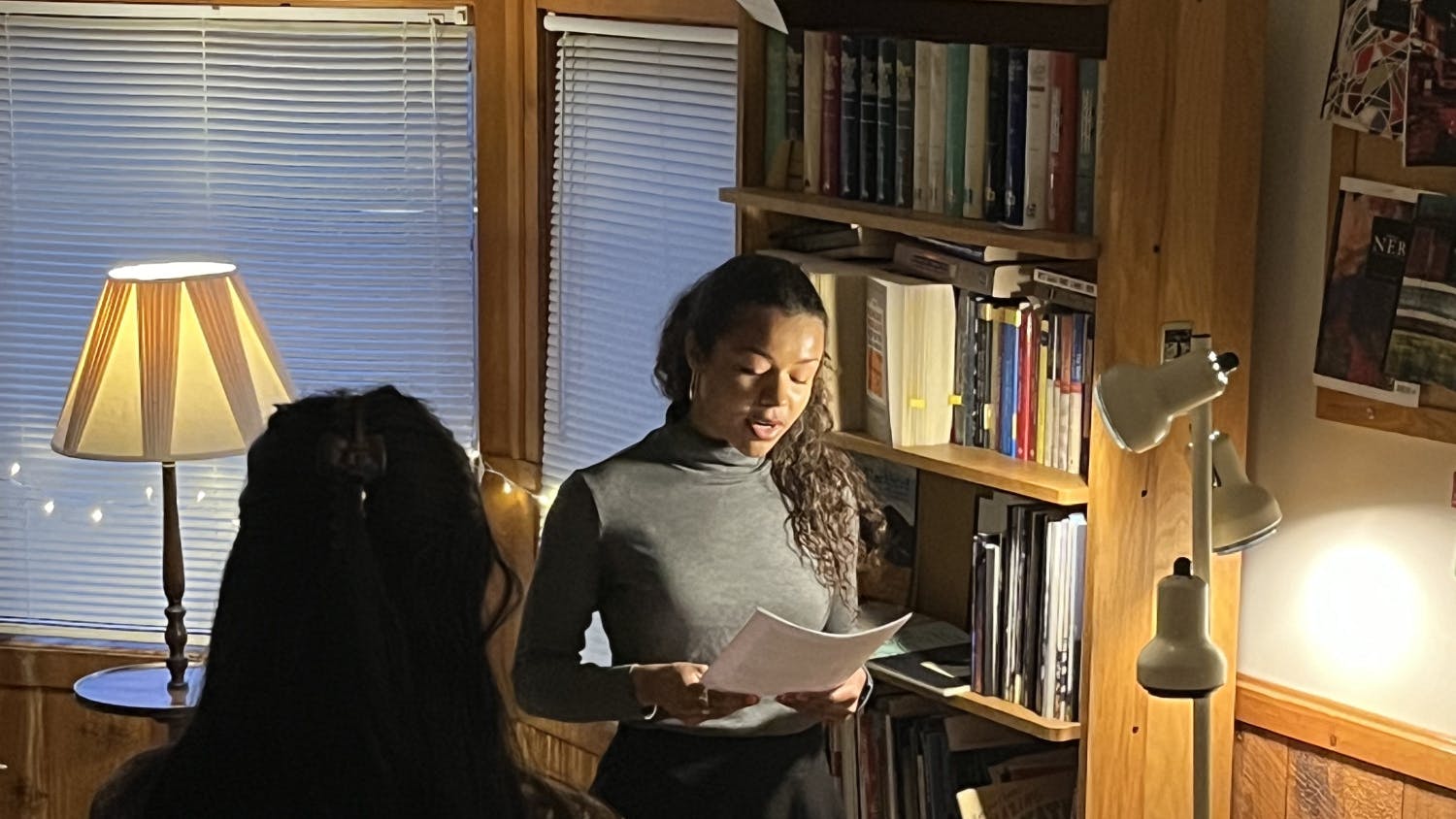Tree vandalism has been on the rise since 2008, with the majority of incidents confined to the north side of campus near Battell Hall and the Atwater residential and dining halls. The greatest destruction was recorded during the 2012-2013 academic year, with dozens of branches ripped down and trees uprooted and eight trees had to be replaced altogether after suffering severe damage.
“[This damage] is going to hurt or kill these trees for the rest of their lives,” said College Landscape Horticulturist Tim Parsons, “Students are ripping bark down and that’s causing a big wound that then slows the tree down. I guess you could think of it as a small, continuously malnourished child.”
Any young tree that is pulled from the ground costs $500 to replace. Broken branches hurt trees as well, but there is no accurate way to determine the cost of such damage. Parsons called the tree vandalism “an aggressive form of entitlement,” but unlike dorm damage, there is no way to hold an individual accountable for an incident, other than catching them in the act.
As a result, administrators, staff and students alike are considering a number of methods to prevent and monitor tree damage, such as educating students and installing security cameras in regions with the greatest damage.
Last spring, Parsons produced a map illustrating annual patterns in incidents of tree vandalism, dating back to 2008. Parsons presented the map and discussed the growing issue of tree vandalism with Community Council, leading a group of student council members to post large-scale copies of Parsons’ map in buildings across campus.
“One of our aims is to make people feel more compelled to speak up concerning who might be doing this damage, so we can put an end to it,” wrote Kate Logan ’13, a student representative of Community Council, in an email. “Also, by forcing the topic and using indirect peer pressure to make people realize how destructive their actions are, we’re hoping that we can prevent something that shouldn’t even be happening in the first place.”
With no fail-safe method of guarding trees, particularly the new landscaping near the Atwater residence halls, Community Council, of which Parsons is a member, is working to hold students responsible for reporting and preventing the damage by offering rewards and propagating various methods of education of trees and tree vandalism.
Parsons has been tracking incidents of tree vandalism and posting pictures of the damage on his blog, MiddLand, to document and spread the news of such violence. On April 5 of this year, after three trees near Atwater were destroyed in two nights, Parsons decided to offer the reward of a pizza from Ramunto’s to anyone who helps him find the vandals.
His hope is that by educating students on the prevalence of tree damage and the monetary and environmental value of trees on campus, a consciousness and appreciation will develop that will ultimately eradicate all tree vandalism. His Arbor Day celebration on May 14 aimed to do just that, funded by an environmental grant and comprised of a 5k run around the most noteworthy trees on campus, planting new trees on the lawn between Allen Hall and Wright Theater and a cook-out outside of Atwater Dining Hall.
Additionally, large price tags were tied to a number of trees on campus that reported the benefits provided by each tree with statistics from TreeBenefits.com.
“Trees do a lot for us,” Parsons said. “Yeah, they’re nice to look at and they’re part of the landscape, but let’s take that Elm next to Old Chapel, for example. That tree will intercept 3,600 gallons of storm water [annually] that won’t go down into storm trains. It’s going to save 179 kilowatt/hours of electricity each year by shading and by blocking wind.”
Education and awareness are not guaranteed to eradicate tree damage, and thus preventing vandalism to trees, buildings and artworks on campus has become one of several reasons for the College to consider installing security cameras on campus. The issue was tabled last spring and could come before Community Council this year.
The cameras, according to Dean of the College Shirley Collado, are “a tool or approach that many other colleges have taken on to promote more health and safety, and more accuracy when investigating major thefts or damages to public places.”
The College is not staffed for live surveillance, so security cameras would be used retroactively as a means of investigating a specific incident, rather than monitoring student actions or movements.
Collado noted that the administration and Community Council were in the preliminary stages of discussing and exploring security cameras on campus late last spring, with no set time frame for an official decision.
“I think it’s reasonable — I’m not saying it’s the right decision — but I think it’s well within our rights to ask whether we as an institution have the opportunity to seek out solutions to where problematic behavior is happening,” said Collado.
Tree Vandalism Incidents Unresolved
Comments



